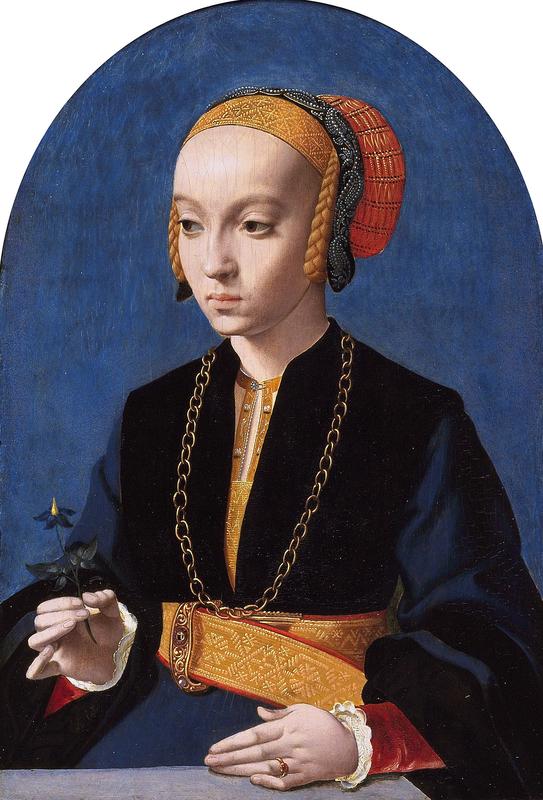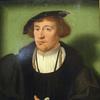More about Portrait of Elisabeth Bellinghausen

Contributor
Bruyn's Portrait of Elisabeth Bellinghausen shows the daughter of Professor Peter Bellinghausen, then City Chancellor of Köln, Germany.
In 1518, Peter Bellinghausen got his degree from Köln University, where he taught law for the rest of his life. The role of Städtischer Kanzler (City Chancellor) was a connection to Habsburg Emperor Charles V, who recognized Köln as a "free imperial city," which collected its own taxes, voted at the Imperial Diet (not Weight Watchers, but the legislative body of the Empire), and upheld the duty of mustering its own military force, which is no easy task. Peter Bellinghausen wasn't quite a king, but he was a lot more than a mayor, which makes Elisabeth a quasi-Princess.
According to German-language writer Christoph Wilhemi, this is one of twelve Bruyn bridal portraits. We don't really know whether this is the work of Bruyn the Elder or Bruyn the Younger, because the father gave his son the exact same name and they shared an occupation, often working together, but there are certain things about Elisabeth Bellinghausen which indicate the context of the portrait. She's not smiling ear to ear like an engagement photo on Instagram, but she is betrothed, suggested by the elaborate gold mesh cap and the flower in her hand. This work is a pendant of the portrait of the father of her six younguns, Jakob Omphal, which is, unfortunately, lost. With Peter Bellinghausen's help, Omphal became Electoral Kanzler of Köln two years after Bellinghausen left office, in 1543. Although a major figure, almost like a mediator or a bureaucratic therapist in the endless theological disputes of the Reformation, Omphal wasn't too opinionated about religion, although (or because) he was a Catholic from a Protestant household. Like Arcimboldo's subject Ulrich Zasius, he corresponded with the famous Christian scholar Erasmus, who also recognized the authority of the Pope and distanced himself from Calvin and Luther, but supported reforms within Catholicism. It was a real balancing act.
Wilhelmi begins his discussion of Bruyn by talking about Albrecht Dürer, revealing that Dürer was to Bruyn as Sauron is to Christopher Lee's Saruman—dominant, unavoidable, shaped like a giant CGI eye. In 1526 CE, Dürer wrote a special inscription under his own copperplate engraving of Philip Melancthon. The inscription is in Latin, and Wilhelmi translates it into German, but the message stays direct enough: Dürer captured Philip's appearance, but not his soul ('seinen Geist'). If you're a painter, and I said to you in 2020: hey, great portrait, but you didn't capture the sitter's soul, you might take it as an insult. But in 1526 in Germany, it could've been the highest compliment. A 15th-century German could have meant it as, your skill is so great that you've captured everything except the consciousness of the person, your creative greatness is so great that you're divine, sitting at the hand of the Lord as He protects us in this plague-ridden place. (I'm not exaggerating: the plague was present somewhere in Europe every single year between 1346 and 1671, according to archival records. Oy gevalt!
Sources
- Bock, Martin. "Jakob Omphal." Portal Rheinische Geschichte, https://www.rheinische-geschichte.lvr.de/Persoenlichkeiten/jakob-omphal….
- Hays, Jo N. The Burdens of Disease: Epidemics and Human Response in Western History. New Brunswick, NJ: Rutgers University Press, 1998.
- Karin, Anna. et al., Regiolekt, Funktiolekt, Idiolekt: Die Stadt und ihre Sprachen. Bonn: Bonn University Press, 2014.











